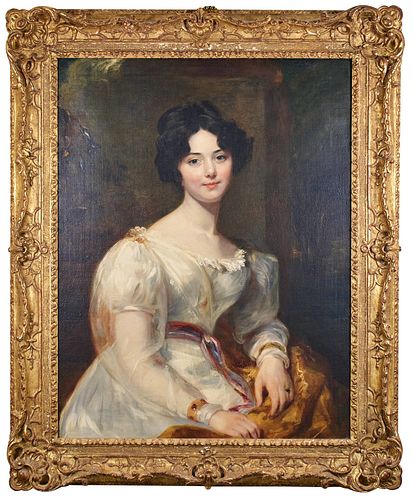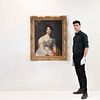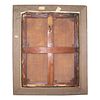Sir Thomas Lawrence (British, 1769 - 1830)
Bid Increments
| Price | Bid Increment |
|---|---|
| $0 | $10 |
| $100 | $25 |
| $500 | $50 |
| $1,000 | $100 |
| $2,500 | $250 |
| $5,000 | $500 |
| $10,000 | $1,000 |
| $25,000 | $2,500 |
| $50,000 | $5,000 |
| $100,000 | $10,000 |
PROVENANCE:
Lady Beaumont's portrait was painted about 1825. It hung at her residence Coleorton Hall until 1902 when it was sold by her grandson Sir George Howland William Beaumont, (10th Baron) to Colgnagi and Company, London. Thereafter, the painting was sold to Knoedler & Company London, who transported it to Knoedler & Company, New York for exhibition and sale. John Talmage, Esq. of New York, acquired it from Knoedler & Company in 1902. In 1913 the painting was sold to Maude Stager Eells, of Cleveland, Ohio. The sale was recorded in: "The American Art Association Recorded Sales - Year 1913 ", page 112, with a sales price of $20,500.00. On November 29, 1961 the portrait was offered at auction by Parke-Bernet Galleries: "Important Old Master XIX Century Paintings and Drawings", lot 35. The painting was acquired by Edward O. Welles at the Parke-Bernet auction and thence passed by descent in the Welles family, Rhode Island.
LITERATURE:
Sir Walter Armstrong, "Lawrence," 1913, page 113.
Kenneth Garlick, Walpole Society, 1962-1964, Vol. 39, p. 31.
EXHIBITION HISTORY:
Old Masters, Knoedler, 1912, No. 23, (illustrated).
Cleveland Museum of Art, 1918, Vol. 5, (illustrated).
William's College Museum of Art, May - June 1962.
ABOUT THE SITTER:
Lady Mary Anne Beaumont was born on December 6, 1806. She was the eldest child of Dr. William Howley (1766-1848), later Archbishop of Canterbury, and Mary Francis Belli, (1783-1860). Her early childhood was spent in Oxford. The family later moved to London when her father was ordained Bishop of London in 1813 and resided in the Grand Fulham Palace. She appears to have excelled in her education. Her inscribed copy of Mercet's Conversations on Chemistry was discovered in 1999.
She married Sir George Howland Willoughby Beaumont, (8th Baron Beaumont) on June 16th, 1825 at St. George's Hanover Square, London. After their marriage, her husband received a significant inheritance, when he became heir to the Beaumont Baronetcy as cousin to the 7th Baron Sir George Beaumont, (1753-1827) the noted artist and founder of the National Portrait Gallery.
The couple took up residence at Coleorton Hall, Leicestershire. At Coleorton Hall Lady Beaumont developed a keen interest in art, architecture and poetry. Her son William was the godchild of the poet William Wordsworth (1770-1850) who was a frequent visitor to Coleorton Hall. In the Coleorton Collection there are numerous correspondences between Wordsworth and Lady Beaumont about his poetry. Wordsworth also designed numerous gardens for Coleorton. (See, Morgan Library & Museum, NYC, Wordsworth Plans for Lady Beaumont).
Mary Wordsworth was also a frequent correspondent to Lady Beaumont on family matters, as well as exchanging gossip on their shared acquaintances (See, Coleorton Collection, MS.1581, Mary Wordsworth letter). From the Wordsworth correspondence Lady Beaumont also appears as an active and affectionate mother who enjoyed her children.
John Constable (1776-1837), the artist, was a frequent visitor and close friend of the Beaumonts. There are numerous recorded drawings of Coleorton Hall by Constable, including his drawing of the Cenotaph to Sir Joshua Reynolds (1723-1792) at Coleorton.
In 1835, in correspondence with the artist John Constable, Sir George wrote that Lady Beaumont could not make their planned meeting because she was afflicted with the "epidemic”. It is believed this was a reference to the influenza epidemic that had originated out of China.
Not long after Sir George's letter was written to John Constable about Lady Beaumont's illness, she died on February 15, 1835 at the age of 28.
Lady Beaumont's portrait hung at Coleorton Hall until 1902.
Condition
Available payment options













